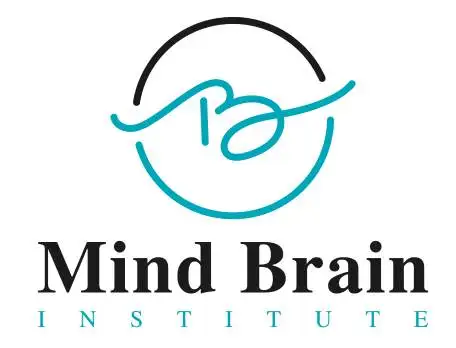
- Posted By Dr. Anuranjan Bist
- Comments 0
Table of Contents
Introduction to Sound Healing and Binaural Beats
Sound healing and binaural beats are emerging as powerful tools in the evolving landscape of mental health care. In an age where disorders like depression and anxiety are increasingly prevalent, the need for integrative treatment approaches has never been greater. While conventional therapies such as medication and psychotherapy remain foundational, patients and practitioners alike are turning toward complementary healing modalities that address the mind-body connection more holistically.
Yes, among the most promising and non-invasive of these approaches are sound healing and binaural beats—ancient and modern tools that harness the power of frequency and vibration to influence mood, brain function, and emotional regulation. At the Mind Brain Institute, New Delhi, in India, we integrate these techniques alongside evidence-based treatments such as Transcranial Magnetic Stimulation (TMS), neurofeedback, and ketamine-assisted therapy to provide a comprehensive and deeply restorative mental health experience.
This article explores the scientific basis, therapeutic mechanisms, and clinical applications of sound healing and binaural beats in treating depression and anxiety.
The Rise of Complementary and Integrative Psychiatry
Conventional psychiatry has made tremendous advances, yet challenges remain. Antidepressants often take weeks to show effects and may not work for up to 30–40% of patients. Similarly, talk therapy requires time, emotional stamina, and consistent engagement, which can be difficult during severe depressive or anxious episodes.
This is where complementary therapies come in—not to replace standard care, but to amplify it.
Sound-based therapies are gaining recognition as powerful adjuncts. They not only induce physiological relaxation but also alter brainwave activity in a targeted, frequency-dependent manner—helping reset the nervous system and emotional processing centers.
What Is Sound Healing?
Sound healing is a therapeutic practice that uses frequencies, tones, and vibrations to promote physical and emotional well-being. It’s rooted in ancient traditions—from Tibetan singing bowls and Vedic mantras to Aboriginal didgeridoos and Gregorian chants.
Modern sound healing sessions often incorporate:
- Crystal singing bowls
- Tuning forks
- Gongs
- Voice-based overtones
- Nature sounds
The goal is to create resonance in the body’s biofield, retune brainwaves, and facilitate a shift from dysregulated states (e.g., hypervigilance, panic, or despair) into calm, meditative, and healing states.
Mechanisms of Action
Brainwave Entrainment:
The brain synchronizes with external rhythmic stimuli. Certain sound frequencies (such as 432 Hz or 528 Hz) can guide brainwaves into theta or alpha states—linked with deep relaxation, introspection, and creativity.
Vagus Nerve Activation:
Low-frequency sound waves stimulate the vagus nerve, enhancing parasympathetic (rest-and-digest) activity, reducing inflammation, and improving mood.
Heart-Brain Coherence:
Rhythmic sound enhances coherence between the heart rate and brain activity, fostering emotional regulation and resilience.
Reduction in Cortisol:
Multiple studies show that sound-based meditation and chanting lower cortisol levels, reducing stress and anxiety symptoms.
Understanding Binaural Beats
Binaural beats are a specific form of auditory illusion created when two slightly different frequencies are played separately into each ear. The brain perceives a third “phantom” beat equal to the difference between the two frequencies.
For example:
Left ear: 200 Hz
Right ear: 210 Hz
Perceived binaural beat: 10 Hz (in the alpha brainwave range)
Each brainwave frequency correlates with a different state of consciousness:
Frequency | Brainwave State | Mental State |
0.5–4 Hz | Delta | Deep sleep, unconscious |
4–8 Hz | Theta | Creativity, meditation |
8–13 Hz | Alpha | Relaxed alertness |
13–30 Hz | Beta | Focus, problem-solving |
30–100 Hz | Gamma | Higher cognitive function |
By guiding the brain into specific states, binaural beats can:
- Improve mood
- Enhance focus
- Induce sleep
- Reduce symptoms of anxiety and depression
Scientific Evidence: How Sound Impacts Mood and the Brain
Several peer-reviewed studies support the clinical value of sound therapy and binaural beats:
1. Anxiety Reduction
A 2020 meta-analysis published in Frontiers in Psychology found significant reductions in anxiety across multiple studies using binaural beats.
Another study published in Journal of Alternative and Complementary Medicine showed that patients exposed to 6 Hz theta binaural beats experienced lowered anxiety during dental procedures.
2. Depression Management
Research in Psychiatry Research demonstrated that theta and alpha-frequency binaural beats induced meditative states, reducing depressive symptoms.
A pilot study in Journal of Affective Disorders indicated that binaural beats may increase frontal lobe activity associated with improved mood and executive function.
3. Cognitive Enhancement
Studies on gamma-frequency (40 Hz) binaural beats suggest improvement in attention and working memory, relevant for patients with depression-related cognitive fog.
Clinical Applications in Depression and Anxiety Treatment
Sound healing and binaural beats can be integrated into psychiatric care at various stages of the therapeutic journey:
A. Acute Symptom Relief
During anxious or depressive spikes, sound therapy can provide immediate physiological grounding. Patients often report feeling “lighter,” “centered,” or “more connected” after just one session.
B. Adjunct to Psychotherapy
Sound meditation prior to or after therapy can:
- Help patients open up emotionally
- Facilitate deeper integration of insights
- Improve therapeutic alliance
C. Support for Treatment-Resistant Depression
For individuals not responding to medication, sound-based therapies offer a safe and non-pharmacological route to modulate mood and brain function.
D. Sleep Regulation
Poor sleep is a core issue in both depression and anxiety. Theta binaural beats have been shown to:
- Reduce sleep onset time
- Increase REM sleep
- Promote sleep continuity
Sound and Consciousness: Beyond Biochemistry
While most psychiatric treatments focus on neurotransmitters and symptoms, sound healing addresses consciousness itself. Patients often describe:
- Transcendental states
- A sense of peace or spiritual awakening
- Emotional catharsis or the release of buried trauma
This shift toward vertical healing—transforming identity and awareness—can be a turning point in recovery. It helps patients move beyond the victim narrative and reconnect with meaning and purpose.
Practical Tips: How to Incorporate Sound Healing and Binaural Beats
For Patients
Start Small
Begin with 10-minute sound bath or binaural beat sessions on platforms like YouTube, Insight Timer, or Brain.fm.
Use Headphones
Binaural beats require stereo headphones for accurate frequency delivery.
Consistency is Key
3–5 sessions per week yield the best results, particularly when done at the same time each day.
Pair with Breathwork or Meditation
Combining sound with breath awareness enhances its calming and grounding effects.
Avoid During Driving
Deep theta or delta states can reduce alertness—use them only when resting or at home.
For Practitioners
Offer group sound healing sessions in-clinic as part of holistic programs.
Integrate theta or alpha-frequency tracks into therapy rooms.
Suggest personalized sound prescriptions for patients as part of home care plans.
Educate patients on the science and safety of frequency-based interventions.
Limitations and Considerations
While safe and well-tolerated, sound-based therapies are not standalone treatments for major psychiatric disorders. They should be:
- Used under guidance if the patient has a history of psychosis, epilepsy, or dissociation.
- Adjusted in volume and duration for individuals sensitive to sensory input.
- Integrated, not substituted, for proven therapies like medication, TMS, or CBT.
Case Example: Sound Healing at Mind Brain Institute, New Delhi, India
A 35-year-old woman with treatment-resistant depression underwent a combined treatment of neurofeedback, ketamine-assisted therapy, and weekly sound healing sessions. Over 12 weeks:
- She reported improved sleep and reduced emotional numbness.
- Her PHQ-9 score dropped from 21 to 6.
- She began meditating daily with 6 Hz binaural beats.
Her own words:
“It felt like my nervous system finally exhaled after years of holding trauma. I could breathe again. The sounds opened a doorway to healing I didn’t know I needed.”
The Future of Psychiatry Is Multisensory
As science embraces the role of consciousness, vibration, and energy in healing, integrative psychiatry must expand beyond pharmaceuticals. Sound healing and binaural beats are tools of the future—precise, elegant, and rooted in both tradition and neuroscience.
At the Mind Brain Institute, New Delhi, in India, we believe in healing that transcends the surface. Whether you’re struggling with anxiety, depression, or simply seeking balance, sound healing can help you tune into your true self.
Conclusion
Sound is more than just auditory input—it is frequency, vibration, and energy that speaks directly to the body and psyche. In the treatment of depression and anxiety, sound healing and binaural beats offer powerful, scientifically grounded, and deeply human pathways to transformation.
By integrating these modalities into clinical practice, we not only improve outcomes—we help patients reconnect with inner peace, purpose, and vitality.


